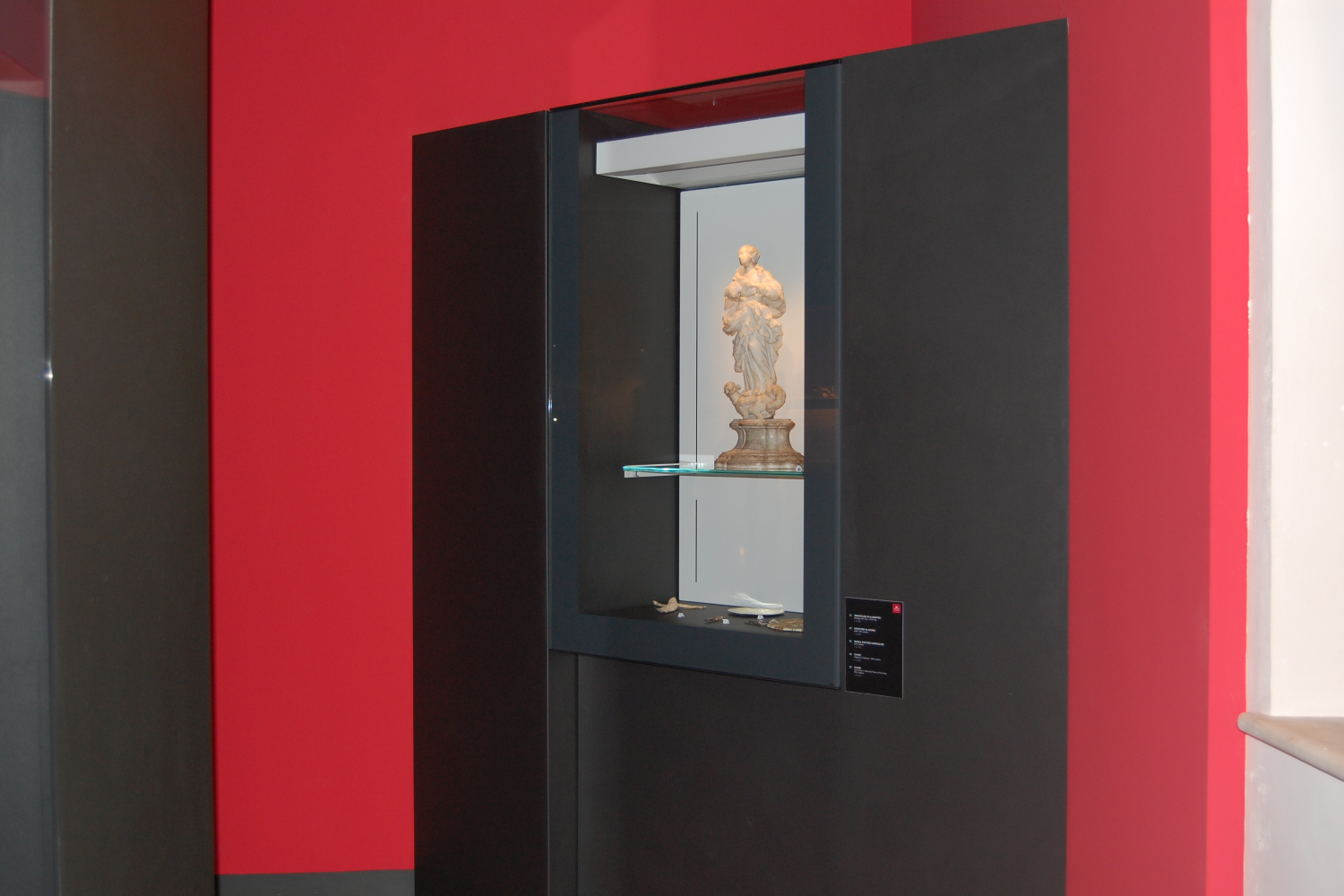SHORT DESCRIPTION:
The precious alabaster sculpture presents the Virgin Immaculate into the iconography of the 16th Century which associates the Virgin Mary to the figure of the woman of the Apocalypse (Giovanni, 12:1-6), sun dressed and surrounded by the stars, while dominating the dragon, a symbol of evil.
The liveliness of the sculptural work and the richness of the wide moving draping traces the work back to the mastery of Trapani of the second half of the 18th Century; the comparison with similar works inside the territory, as the Immaculate of the Padri Cappuccini of Caltagirone referred to Alberto Tipa and helpers, and the stylistic solutions adopted suggest that the work of
Castebuono was realized by the same shop.1
The Virgin Mary looks upward and brings her hand on her breast; Under her feet there is the tamed dragon that holds the fruit of sin in its teeth. The carved surfaces indicates a particular attention to the details above all of the
hair, in the folds of her robe and of the mantle, and in the texture of the dragon’s skin.

